Minicondylar plate with lag screw
1. Principles
Indications
Fractures of the distal metaphysis can be transverse, oblique, or comminuted.
Always confirm the fracture configuration in views from both planes.
Stable undisplaced fractures can be treated nonoperatively. Any displacement or instability will usually require ORIF.
Other indications for ORIF are open fractures, or soft-tissue lacerations. In these cases, ORIF is the best option.
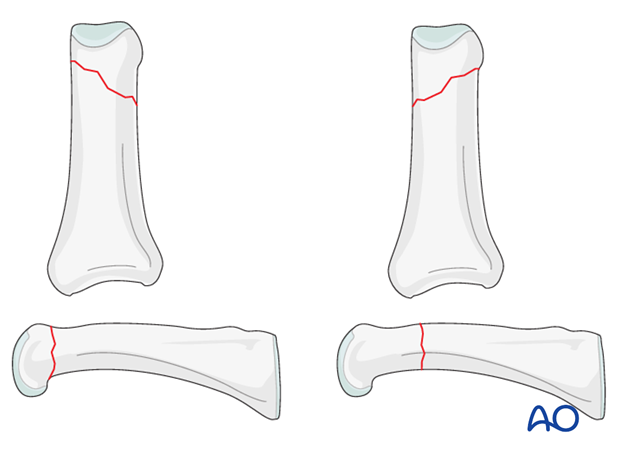
Reduction principles
Indirect reduction is achieved by traction and manipulation.
Sometimes indirect reduction may be prevented by interposition of the lateral band.
If the fracture is irreducible, ORIF is indicated.

2. Approach
For this procedure a midaxial approach to the proximal phalanx is normally used.

3. Reduction
Reduction by traction
Reduction can be achieved by traction and flexion exerted by the surgeon, ...
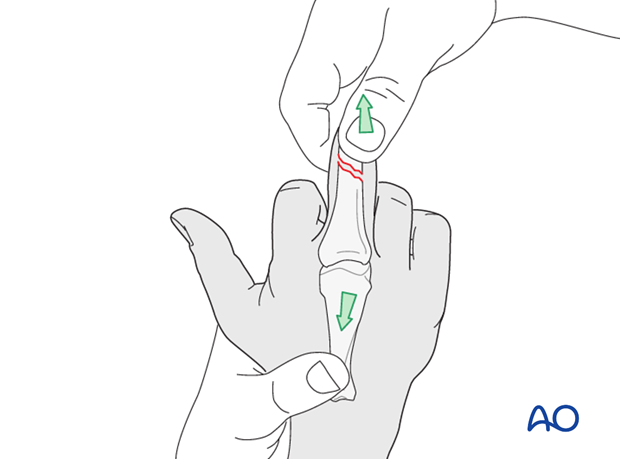
...or by two pointed reduction forceps.
Confirm reduction under image intensification.
Sometimes, these fractures are stable after reduction. In such cases, nonoperative treatment is indicated.
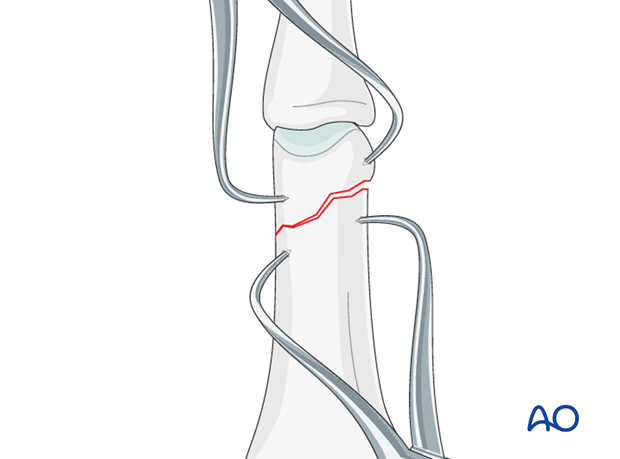
Direct reduction
Direct reduction is necessary when the fracture can not be reduced by traction and flexion, or is unstable.
When indirect reduction is not possible, this is usually due to interposition of parts of the extensor apparatus.
Use a pointed reduction forceps for direct reduction.
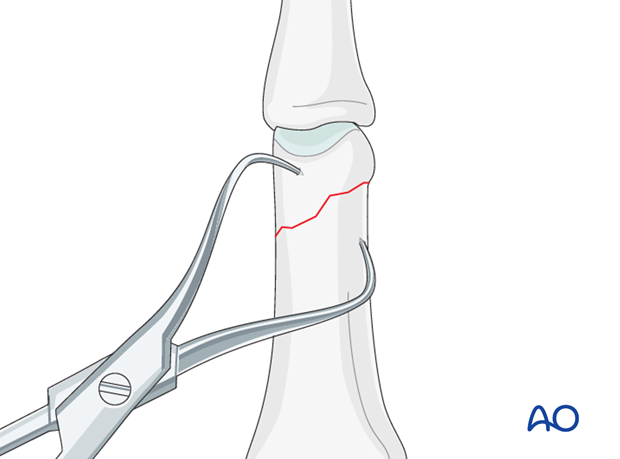
Preliminary fixation
The reduction is preliminarily secured with a K-wire, or reduction forceps.
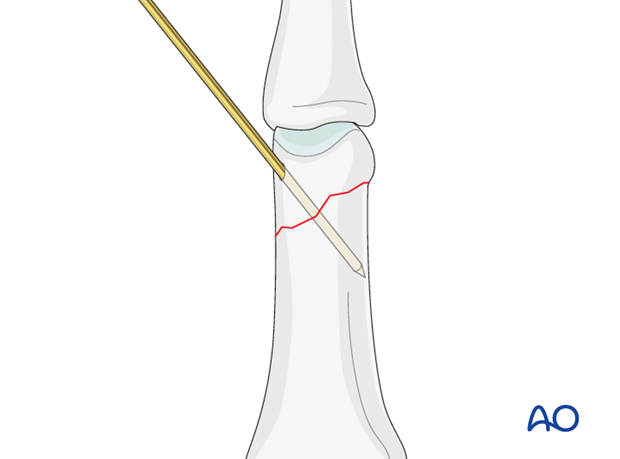
Identifying malrotation
At this stage, after provisional fixation, it is advisable to check the alignment and rotational correction by moving the finger through a range of motion. Rotational alignment can only be judged with the fingers in a degree of flexion, and never in full extension. Malrotation may manifest itself by overlap of the flexed finger over its neighbor. Subtle rotational malalignments can often be judged by tilting of the leading edge of the fingernail, when the fingers are viewed end-on. If the patient is conscious and the regional anesthesia still allows active movement, the patient can be asked to extend and flex the finger. Any malrotation is corrected by direct manipulation and later fixed.
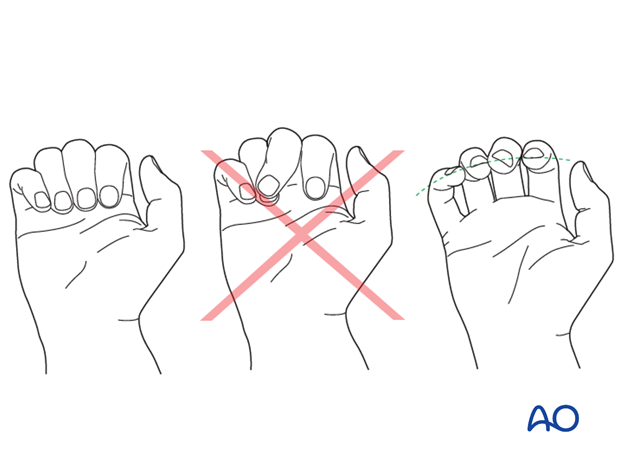
Using the tenodesis effect when under anesthesia
Under general anesthesia, the tenodesis effect is used, the surgeon fully flexing the wrist to produce extension of the fingers, and fully extending the wrist to cause flexion of the fingers.
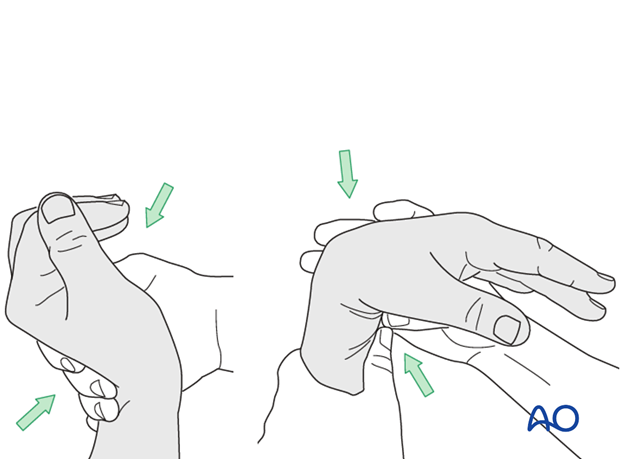
Alternatively, the surgeon can exert pressure against the muscle bellies of the proximal forearm to cause passive flexion of the fingers.
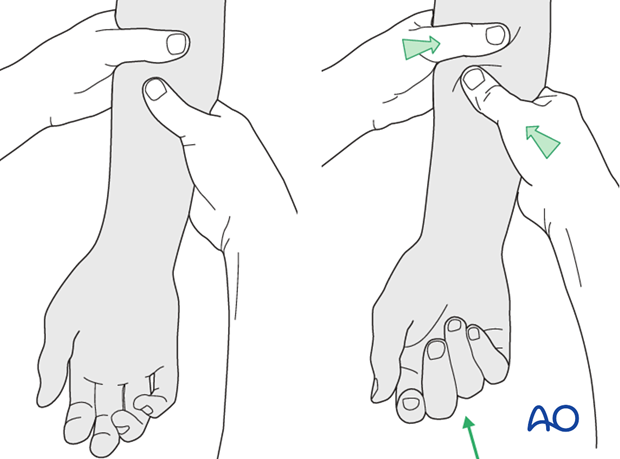
4. Planning
Planning plate position
It is wise to use magnifying loupes for this step.
Plan the blade position as dorsal as possible, in order not to injure the collateral ligament.
Make sure that the plate will be perfectly aligned with the long axis of the proximal phalanx in the lateral view.
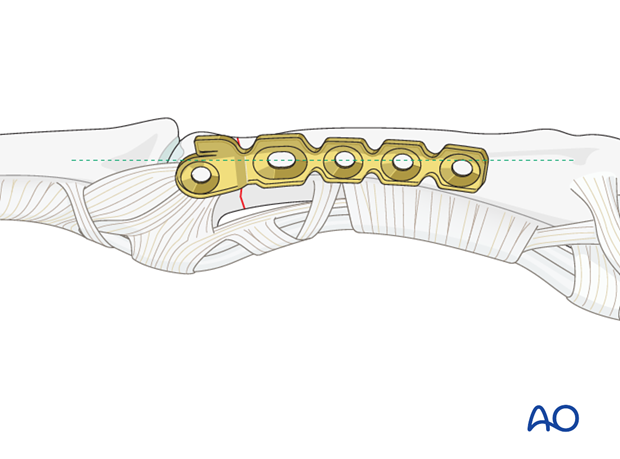
Oblong plate hole
If a lag screw is planned, the oblong plate hole must be positioned so that the lag screw will cross the fracture surface at its center.
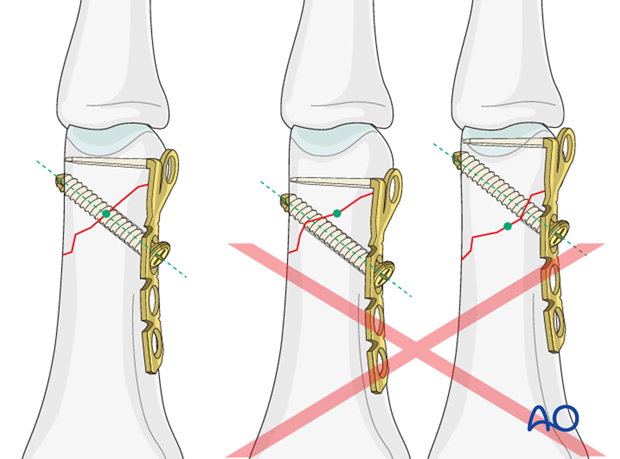
The minicondylar blade plates are available in two forms. One fits on the ulnar aspect of the bone, and the other on the radial aspect. It is a common mistake to choose the wrong one. The correct implant will have the blade dorsal and the distal screw hole palmar.
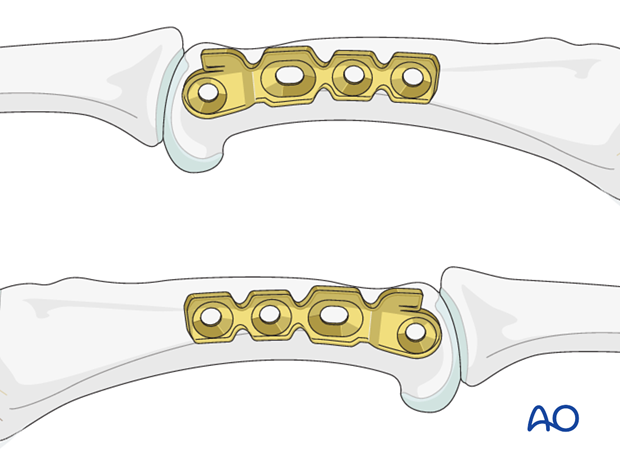
Radial, or ulnar, plate position
The plate is placed either on the ulnar, or on the radial side, depending on the direction of the fracture obliquity in the AP view.
The plate must always be placed so that a lag screw can be inserted through its oblong hole as perpendicularly as possible to the fracture plane.
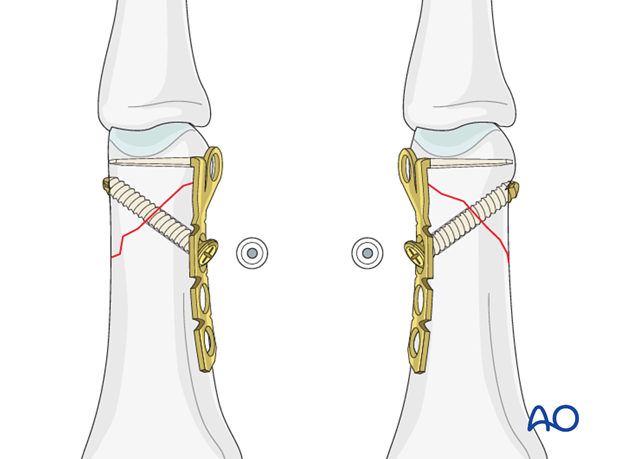
Corresponding flare
The position of the plate should be distal enough to ensure that the metaphyseal flare fits to the shape of the shoulder of the plate.
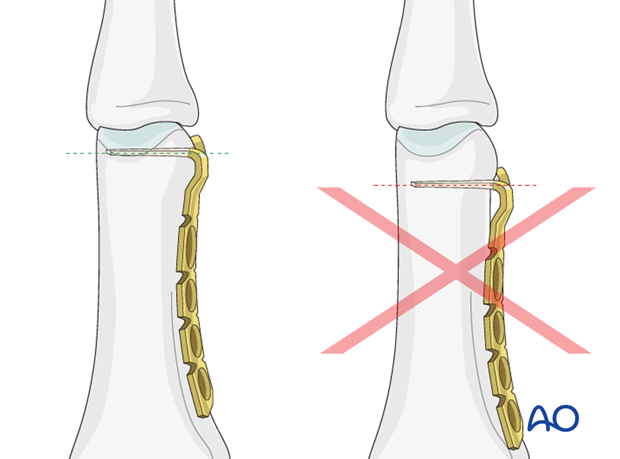
Trim the plate
Adapt the plate length to fit the length of the proximal phalanx. Avoid sharp edges which may be injurious to the tendons. There should be at least 3 plate holes distal to the fracture available for fixation in the diaphysis. At least two screws need to be inserted into the diaphysis.
Pearl: Cut the blade transversely
If you cut the blade on the flat, it will compress and widen very slightly as it is cut. This makes its maximal width very slightly larger than 1.5 mm. It may not fit in the 1.5 mm hole that you have drilled.
Therefore, cut the blade on edge (to deform it through its narrower dimension) to the correct length. The resultant tip is somewhat arrow-shaped.
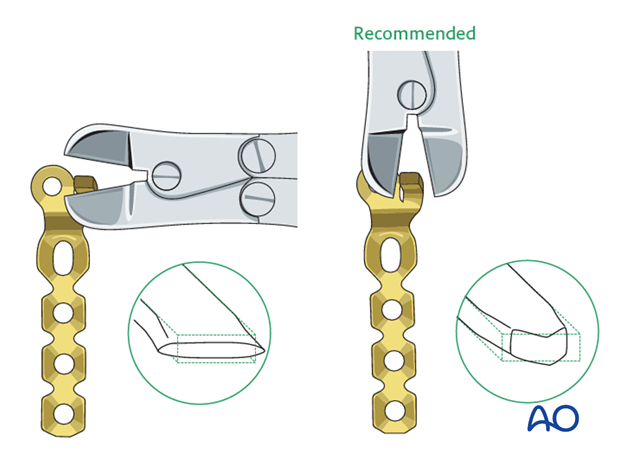
Pitfall: avoid dangerous edge
If you are using a dedicated minicondylar plate cutter which trims the plate by a shearing action, be very careful not to create a sharp dorsal edge that will endanger the extensor apparatus. Correct cutting will produce the sharp edge on the bone side of the plate.
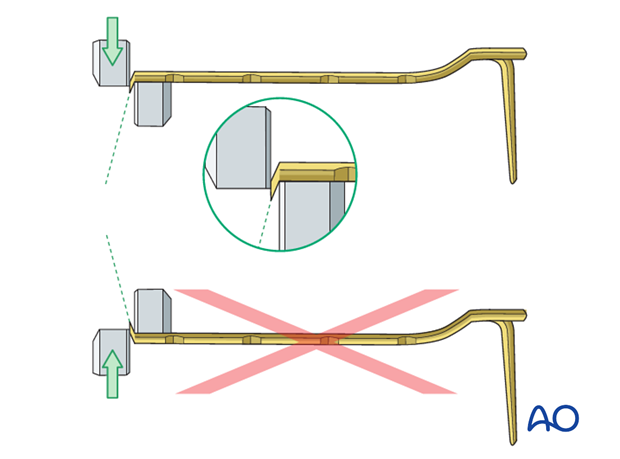
5. Drilling
Determine location of drill hole
In order to determine the position of the first drill hole (for the blade), it is helpful to turn the plate over and use it as a template.
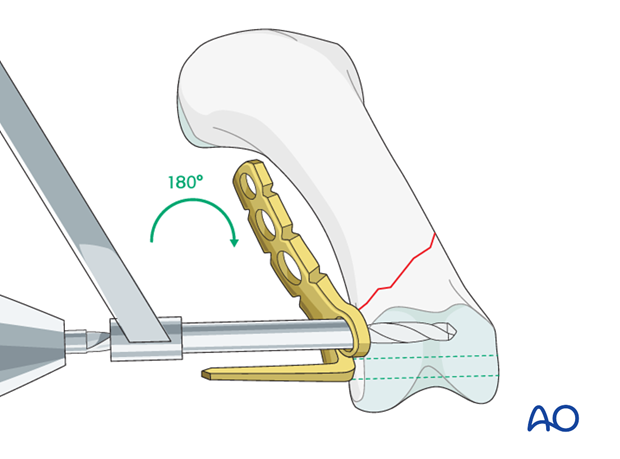
Drill a 1.5 mm transverse hole through the condylar metaphysis of the proximal phalanx adjacent to the subchondral bone, to create a track for the blade.
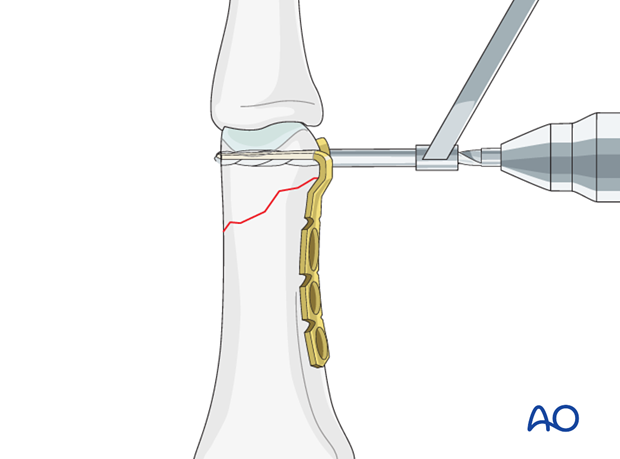
The drill hole needs to be sufficiently dorsal to leave enough space for the plate’s distal hole, adjacent to the blade.
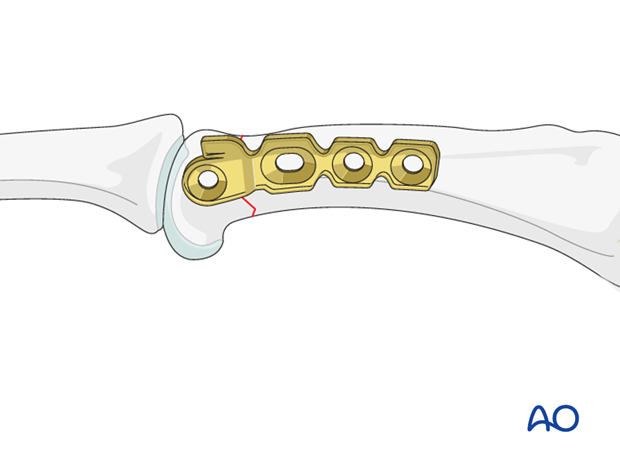
6. Plate application
Prepare the blade
Measure the length of the drill hole.
Cut the blade to the determined length, so that it just fills the drill hole.

Pitfall: Protrusion of the blade
Avoid protrusion of the blade through the opposite cortex, as friction during movement and eventual ligament injury may result.
Due to the fact that the phalanx is wider on the palmar side that on the dorsal side, an AP or PA x-ray view may suggest that the blade is fully contained within the bone, whereas in transverse section, it actually protrudes.
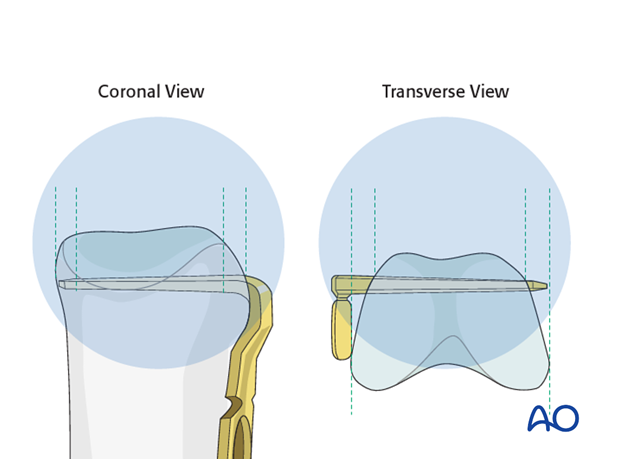
Contouring of the plate
Twist and bend the plate to follow exactly the shape of the phalangeal diaphysis.
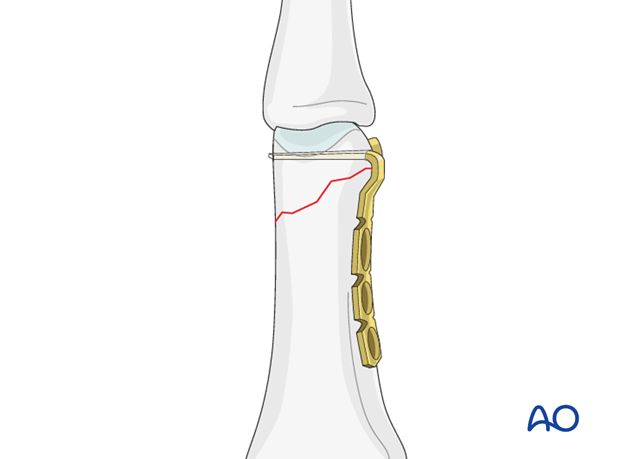
As the minicondylar plate has notches (like a reconstruction plate), it can also be curved on the flat to fit the curve of the phalanx.
Note
It is worth investing time in the precise contouring of the plate to the phalanx. Any imperfection in contouring will result in fracture displacement when the diaphyseal screws are tightened.
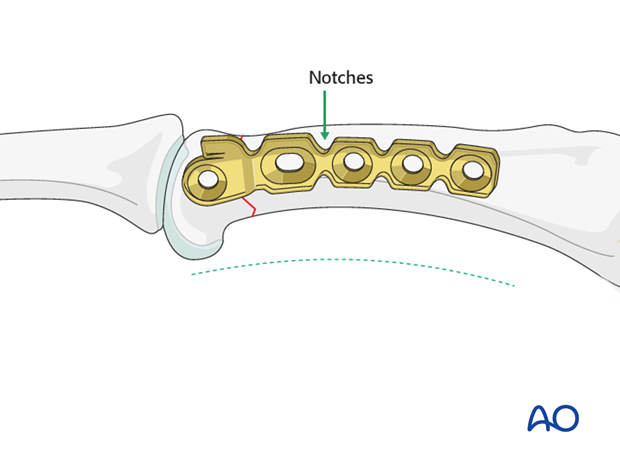
Introduce the blade into the drill hole. Gently push with the thumb until the plate is fully seated.
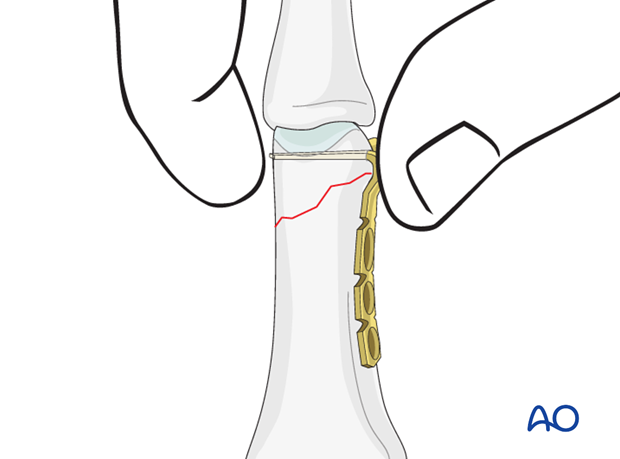
Align the plate with the diaphysis
Before inserting distal screw adjacent to the blade, ensure that the plate is in line with the phalangeal diaphysis in the lateral view by rotating it around the long axis of the blade.
Insert distal screw
The distal screw is then inserted in a neutral position.
The screw should just engage the far cortex.
Note
Be careful to avoid screw protrusion, as ligament injury may result from friction during movement.
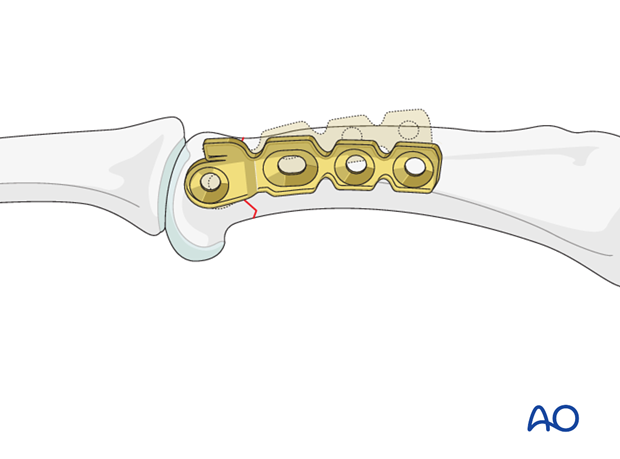
Drill eccentric proximal hole
Use a 1.1 mm drill bit to prepare the first diaphyseal screw hole at the proximal end of the plate.
This hole must be eccentrically drilled to produce axial compression.
To improve stability, drill this hole in a slightly divergent angle.
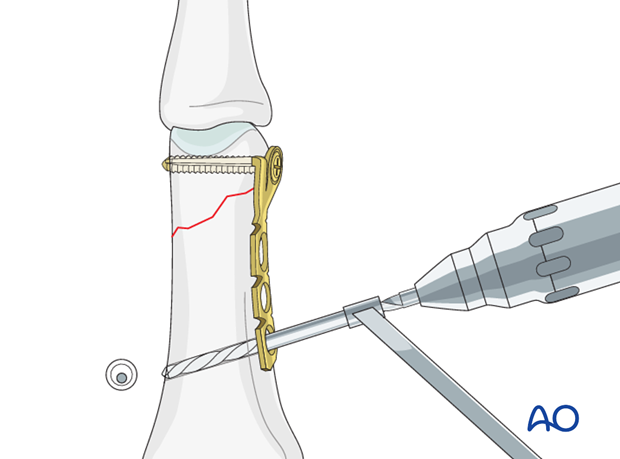
Fracture compression
Measure for screw length and insert a self-tapping 1.5 mm screw in an eccentric position.
Tightening the screw will compress the fracture axially.
Because of the antiglide position of the plate, shearing forces will not displace the fracture.
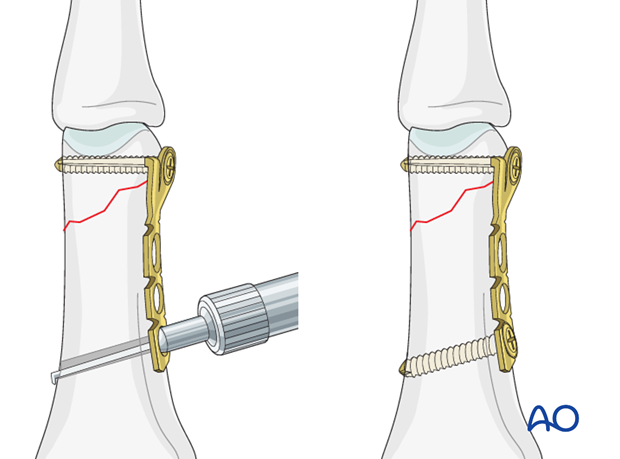
Pitfall: loss of reduction
While tightening this second screw, a maladapted plate may cause rotational displacement and result in loss of reduction.
Be sure to check the reduction using image intensification after this step.
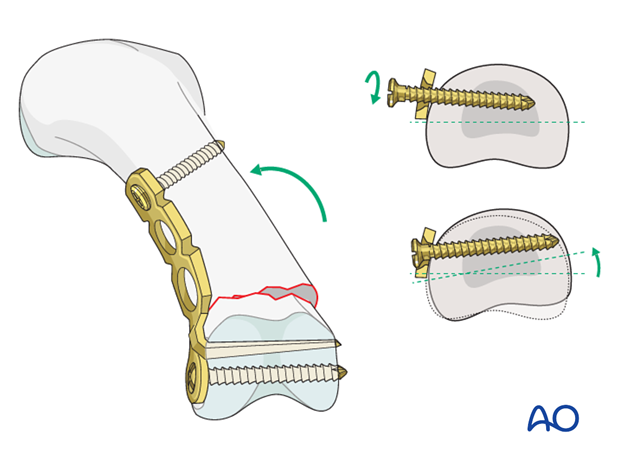
7. Lag screw insertion
Drilling for lag screws
There are two options to prepare the gliding hole and the threaded hole:
1) Gliding hole first
Drill the gliding hole in the near cortex. Ensure perfect fracture reduction and then insert a drill guide. Drill the threaded hole in the far (trans) cortex through the drill guide.
This method ensures that the threaded hole is perfectly in line with the gliding hole.
This is the preferred method.
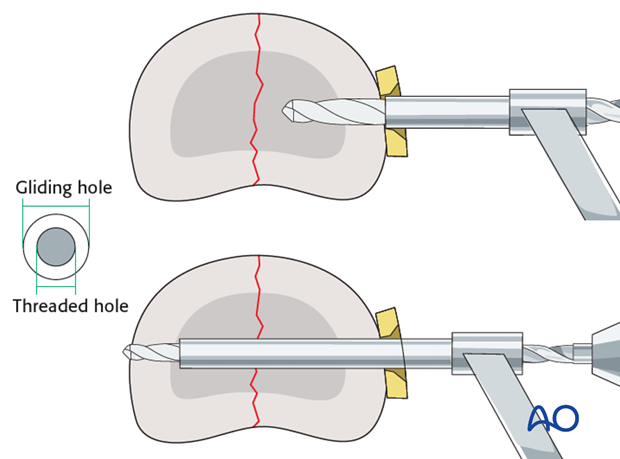
2) Threaded hole first
Drill a hole through both cortices, using the drill for the threaded hole. Then use the corresponding larger drill bit to overdrill the near cortex to create the gliding hole.
This technique is useful for small fragments. The disadvantage, however, is that the holes may not be centered in relation to each other.
Pearl
If the near cortex is tapped prior to overdrilling for the gliding hole, eccentric passage of the second drill is less likely. This can be achieved by inserting the chosen self-tapping screw through the near (cis) cortex and then removing it. The drill will now follow exactly the threaded axis.
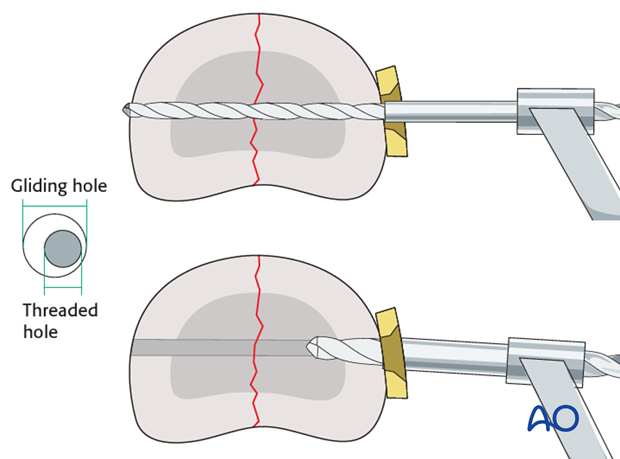
Pitfall: Oblique measurement
When measuring for screw length in oblique drill holes, the measurement to the acute angle is different from the measurement to the obtuse angle. This problem increases with the degree of obliquity.
Always measure both angles and use the longer measurement. However, keep in mind that too long a screw can protrude to the extent that it puts the soft tissues at risk.
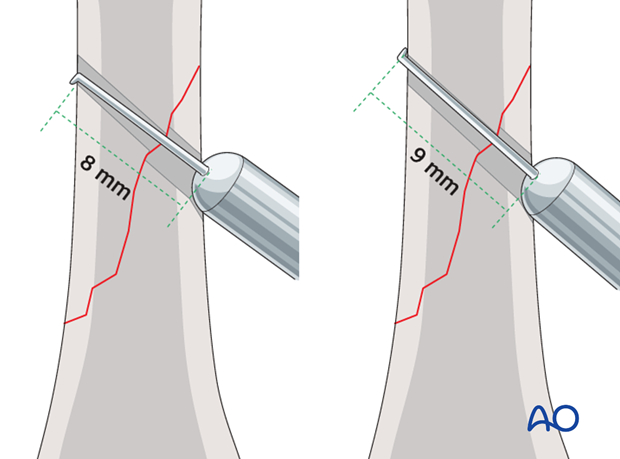
Screw length pitfalls
Ensure that a screw of the correct length is used.
Too short screws do not have enough threads to engage the cortex properly. This problem increases when self-tapping screws are used due to the geometry of their tip.
Too long screws endanger the soft tissues, especially tendons and neurovascular structures. With self-tapping screws, the cutting flutes are especially dangerous, and great care has to be taken that the flutes do not protrude beyond the cortical surface.
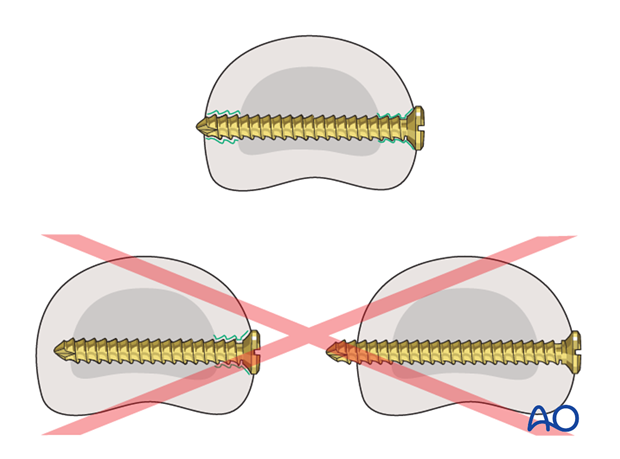
Insert lag screw
Insert the lag screw and tighten it to compress the fracture surfaces.

Insert remaining screw
Insert the remaining diaphyseal screw in a neutral position.
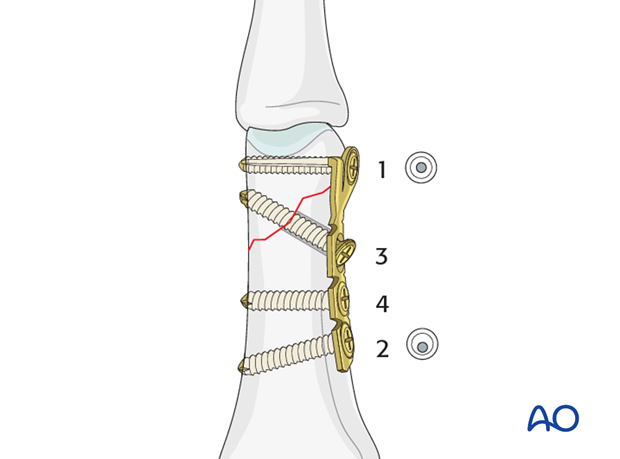
8. Aftertreatment
Postoperatively
Protect the digit with buddy strapping to the adjacent finger, to neutralize lateral forces on the finger.

Functional exercises
The patient can begin active motion (flexion and extension) immediately after surgery.
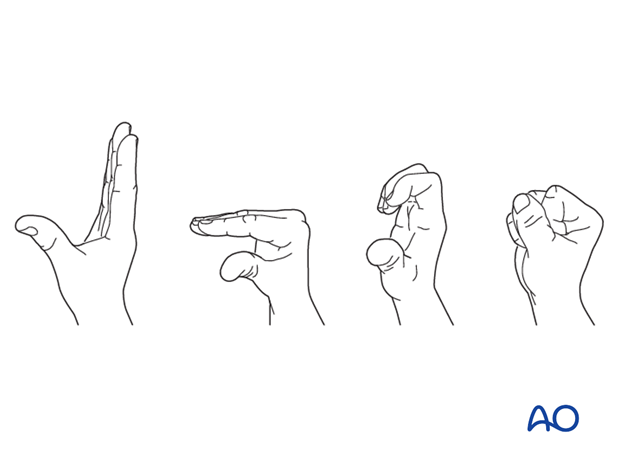
Follow-up
See patient after 5 days and 10 days of surgery.
Implant removal
The implants may need to be removed in cases of soft-tissue irritation.
In case of joint stiffness, or tendon adhesion’s restricting finger movement, tenolysis, or arthrolysis become necessary. In these circumstances, take the opportunity to remove the implants.












